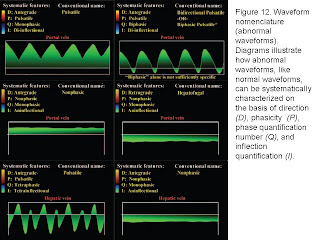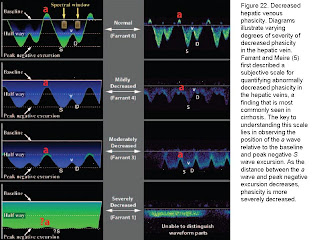TRUNG TÂM Y KHOA MEDIC HÒA HẢO-Thành phố Hồ Chí Minh
Chẩn đoán sớm teo đường mật là một thách thức lâm sàng. Teo đường mật là tắc hay không liên tục đoạn ngoài gan làm gián đoạn dòng mật chảy. Nếu không được điều trị ngoại khoa trong giai đoạn sơ sinh sẽ dẫn đến biến chứng xơ gan mật.
Có 2 nhóm bệnh : một nhóm chỉ với teo đường mật đơn thuần (thể sau sinh) khoảng 65-90% trường hợp và nhóm kia kèm theo hội chứng đảo ngược phủ tạng hoặc đa lách/không có lách với các dị tật bẩm sinh khác hoặc không có, với khoảng 10-35% các trường hợp.
Phân loại teo đường mật (từ Steven M Schwarz, Children's Hospital at Downstate,
Phân loại teo đường mật sau đây dựa trên vị trí thường gặp nhất tuy có nhiều biến thiên trong số các bệnh nhân:
• Type I = tắc ống mật chủ với đoạn gần còn thông.
• Type II= teo ống gan chung, với nang ở rốn gan.
• Type III (hơn 90% bệnh nhân) = teo ống gan P và T tới rốn gan. Các dạng này không được lầm với nhóm thiểu sản đường mật trong gan (intrahepatic biliary hypoplasia), là nhóm bệnh lý khác không thể mổ sửa chữa được (surgically noncorrectable disorders).
Dù nguyên nhân chưa rõ nhưng nếu được chẩn đoán sớm và tiến hành mổ trước 2-4 tháng tuổi (phẫu thuật Kasai) có thể tránh được biến chứng cao áp tĩnh mạch cửa và suy gan để chuẩn bị ghép gan về sau.
Chụp nhấp nháy gan bằng đồng vị phóng xạ(technecium Tc-99m)[thấy hình gan, đồng vị phóng xạ không xuống ruột nếu có teo đường mật]có giá trị chẩn đoán cao, nên chỉ định sớm nếu có thể được, nhưng phải cân nhắc nguy cơ nhiễm xạ cho trẻ còn bú.
Siêu âm thường là phương tiện được chọn đầu tay, nhưng lại lệ thuộc kinh nghiệm người khám. Siêu âm có thể chứng minh không thấy có túi mật và không có giãn đường mật với độ nhạy và độ đặc hiệu không quá 80%. Ở lứa tuổi này, siêu âm khó đo đạc chính xác đường mật trong và ngoài gan, còn kích thước túi mật phải cho nhịn bú trước khám siêu âm ít nhất 8 tiếng. Tuy nhiên, kích thước túi mật nhỏ khi đói hoặc không co lại sau bú không được coi là dấu hiệu chắc chắn để khảo sát teo đường mật bằng siêu âm.
Từ 2003, các tác giả Nhật và Hàn quốc có các báo cáo siêu âm đề nghị sử dụng dấu thừng tam giác (triangular cord sign, TC) để chẩn đoán teo đường mật với độ nhạy 62-95% và độ đặc hiệu 98-100%. Theo đó, dấu TC dương tính khi bề dày vách trước nhánh P tĩnh mạch Cửa (echogenic anterior wall of the right portal vein, EARPV) lớn hơn 4mm trên mặt cắt dọc qua rốn gan. Khi có dấu TC, có thể chẩn đoán teo đường mật, có độ tin cậy cao hơn nếu chỉ dựa vào kích thước túi mật (bình thường dài hơn 15mm), và túi mật không co lại sau bú. Tuy nhiên có trường hợp có teo đường mật nhưng siêu âm lại không tìm thấy dấu TC này.
Gần đây, 2009, nhóm tác giả Hàn quốc (MS Lee và cs) nhận thấy 86-100% trẻ bị teo đường mật đều có dòng chảy mạch máu dưới bao gan (hepatic subcapsular flow) và giãn động mạch gan riêng có ý nghĩa (2,1mm so với bình thường là 1,5mm), trong khi dấu TC ở siêu âm là 62%. Do đó, họ đề nghị dùng siêu âm màu Doppler tìm dòng chảy mạch máu dưới bao gan (hepatic subcapsular flow) và dấu hiệu giãn động mạch gan riêng để chẩn đoán teo đường mật trong gan trong trường hợp dấu TC âm tính.
Tóm lại, khi khảo sát teo đường mật, ngoài kích thước túi mật (bình thường dài hơn 15mm), siêu âm chẩn đoán nên chú ý tìm dấu thừng tam giác (triangular cord sign)và dòng chảy mạch máu dưới bao gan (hepatic subcapsular flow) và dấu hiệu giãn động mạch gan riêng (đường kính lớn hơn 1,5mm).
Biliary Atresia: Color Doppler US Findings in Neonates and Infants, Mu Sook Lee, Myung-Joon Kim, Mi-Jung Lee, Choon Sik Yoon, Seok Joo Han, Jung-Tak Oh, Young Nyun Park, Radiology: Volume 252: Number 1—July 2009.
ABSTRACT:
Purpose: To describe color Doppler ultrasonographic (US) findings in livers of neonates with biliary atresia (BA) and to compare them with US findings in livers of neonates with non-BA and control subjects.
Materials and Methods:
Institutional review board approval was obtained; acquisition of informed consent was exempted. US and color Doppler US findings were retrospectively reviewed in 64 patients with neonatal cholestasis and 19 control subjects. BA and non-BA were confirmed in 29 and 35 patients, respectively. Three pediatric radiologists assessed US and color Doppler US images, independently documented their findings, and resolved discrepancies by consensus. Triangular cord (TC) sign, gallbladder length, and hepatic artery and portal vein diameters were evaluated on US images. The presence of hepatic subcapsular flow was evaluated on color Doppler US images. Diagnostic value of TC sign and hepatic subcapsular flow in the diagnosis of BA were evaluated. Significance of hepatic artery and portal vein diameters in each group was assessed.
Results: In the diagnosis of BA, sensitivity and specificity of the TC sign on US images were 62% and 100%, respectively. On color Doppler US images, hepatic subcapsular flow was detected in all patients with BA and in five patients with non-BA. At the first review, there was a discrepancy between radiologists in interpretation of hepatic subcapsular flow in patients with non-BA. However, consensus was reached at the second review. There was no hepatic subcapsular flow in control subjects. Sensitivity and specificity of hepatic subcapsular flow on color Doppler US images were 100% and 80%–86%, respectively, on the basis of individual interpretations of reviewers. Sensitivity and specificity of hepatic subcapsular flow on color Doppler US images were 100% and 86%, respectively, on the basis of consensus reading. Mean diameter of the hepatic artery in patients with BA (2.1 mm +/- 0.7 [standard deviation]) was significantly larger than that in patients with non-BA (1.5mm+/- 0.4, P = .001) and control subjects (1.5 mm +/- 0.4, P= .001).
Conclusion: The presence of hepatic subcapsular flow is useful for differentiating between BA and other causes of neonatal jaundice.
© RSNA, 2009
ADVANCES in KNOWLEDGE=
+ Color Doppler US can be used to detect hepatic subcapsular flow in patients with biliary atresia (BA).
+ Color Doppler US findings may indicate hyperplasia and hypertrophy of the hepatic artery in patients with BA; these are indicated by a significantly larger hepatic artery diameter in patients with BA than in patients with non-BA and control subjects.
Implication for Patient Care
Hepatic subcapsular flow on color Doppler US images can be used to diagnose BA when triangular cord sign findings are negative.
TRIANGULAR CORD (TC) SIGN: The TC sign was defined as the thickness of the echogenic anterior wall of the right portal vein (EARPV) of more than 4 mm on a longitudinal scan. Biliary atresia was diagnosed when the TC sign was present.
Objective Criteria of Triangular Cord Sign in Biliary Atresia on US Scans, Hee-Jung Lee, Sung-Moon Lee, Woo-Hyun Park, Soon-Ok Choi, Radiology 2003; 229:395–400.
PURPOSE: To develop objective criteria for the ultrasonographic (US) appearance of the triangular cord (TC) sign for the diagnosis of biliary atresia.
MATERIALS AND METHODS: US was performed in 86 infants with jaundice. Biliary atresia (n = 20) was confirmed with hepatoportoenterostomy. Neonatal hepatitis (n = 66) was diagnosed with needle biopsy (n = 5), cholescintigraphy (n = 19), or clinical findings (n = 42). Thickness of the echogenic anterior wall of the right portal vein (EARPV) was measured. The TC sign was defined as thickness of the EARPV of more than 4 mm on a longitudinal scan. Biliary atresia was diagnosed when the TC sign was present. Statistical analyses were performed to compare the thickness of the EARPV between patients with biliary atresia and those with neonatal hepatitis and to test the significance of a 4-mm thickness as the criterion for the TC sign in the differentiation of biliary atresia from neonatal hepatitis (P = .05).
RESULTS: The TC sign was present in 16 (80%) of 20 patients with biliary atresia and in one of 66 patients with neonatal hepatitis. Mean thickness of the EARPV was significantly greater in patients with biliary atresia (5.39 mm) than in patients with neonatal hepatitis (2.17 mm) (P = .05). Use of 4-mm thickness as the criterion for TC sign was statistically significant (P = .05), resulting in a sensitivity of 80%, specificity of 98%, and positive and negative predictive values of 94% for the diagnosis of biliary atresia.
CONCLUSION: An objective criterion of the TC sign is an EARPV thicker than 4 mm on a longitudinal scan.
© RSNA, 2003.
Sonographic Diagnosis of Biliary Atresia in Pediatric Patients Using the “Triangular Cord” Sign Versus Gallbladder Length and Contraction, Kimio Kanegawa, Yoshinobu Akasaka, Eri Kitamura, Syoji Nishiyama, Toshihiro Muraji, Eiji Nishijima, Shiiki Satoh, Chikara Tsugawa, AJR 2003;181:1387–1390 © American Roentgen Ray Society
OBJECTIVE. A retrospective review was performed to evaluate the importance of the “triangular cord” sign in comparison with gallbladder length and contraction for the diagnosis of biliary atresia in pediatric patients.
MATERIALS AND METHODS. Fifty-five fasting infants with cholestatic jaundice were examined on sonography. The examinations focused on the visualization of the triangular cord sign and assessment of gallbladder length and contraction. The diagnosis of neonatal hepatitis or of other causes of infantile cholestasis was made if symptom resolution occurred during follow-up.
RESULTS. A triangular cord sign was found in 27 of 29 infants with biliary atresia and in one of 26 infants with neonatal hepatitis or other causes of infantile cholestasis. The diagnostic accuracy was 95%, sensitivity was 93%, and specificity was 96%. The gallbladder was thought to be abnormal if it was less than 1.5 cm long, was not detectable, or was detectable but had no lumen. The gallbladder was abnormal in 21 of 29 infants with biliary atresia, whereas it was abnormal in eight of 26 infants with neonatal hepatitis or other causes of infantile cholestasis. The diagnostic accuracy was 71%, sensitivity was 72%, and specificity was 69%. The gallbladder was detectable on sonography in 13 infants with biliary atresia and 26 infants with neonatal hepatitis or other causes of infantile cholestasis. Gallbladder contraction was not confirmed in 11 of 13 infants with biliary atresia and seven of 26 infants with neonatal hepatitis or other causes of infantile cholestasis. The diagnostic accuracy was 77%, sensitivity was 85%, and specificity was 73%.
CONCLUSION. The triangular cord sign was a more useful sonographic finding for diagnosing biliary atresia than gallbladder length and contraction.




























































